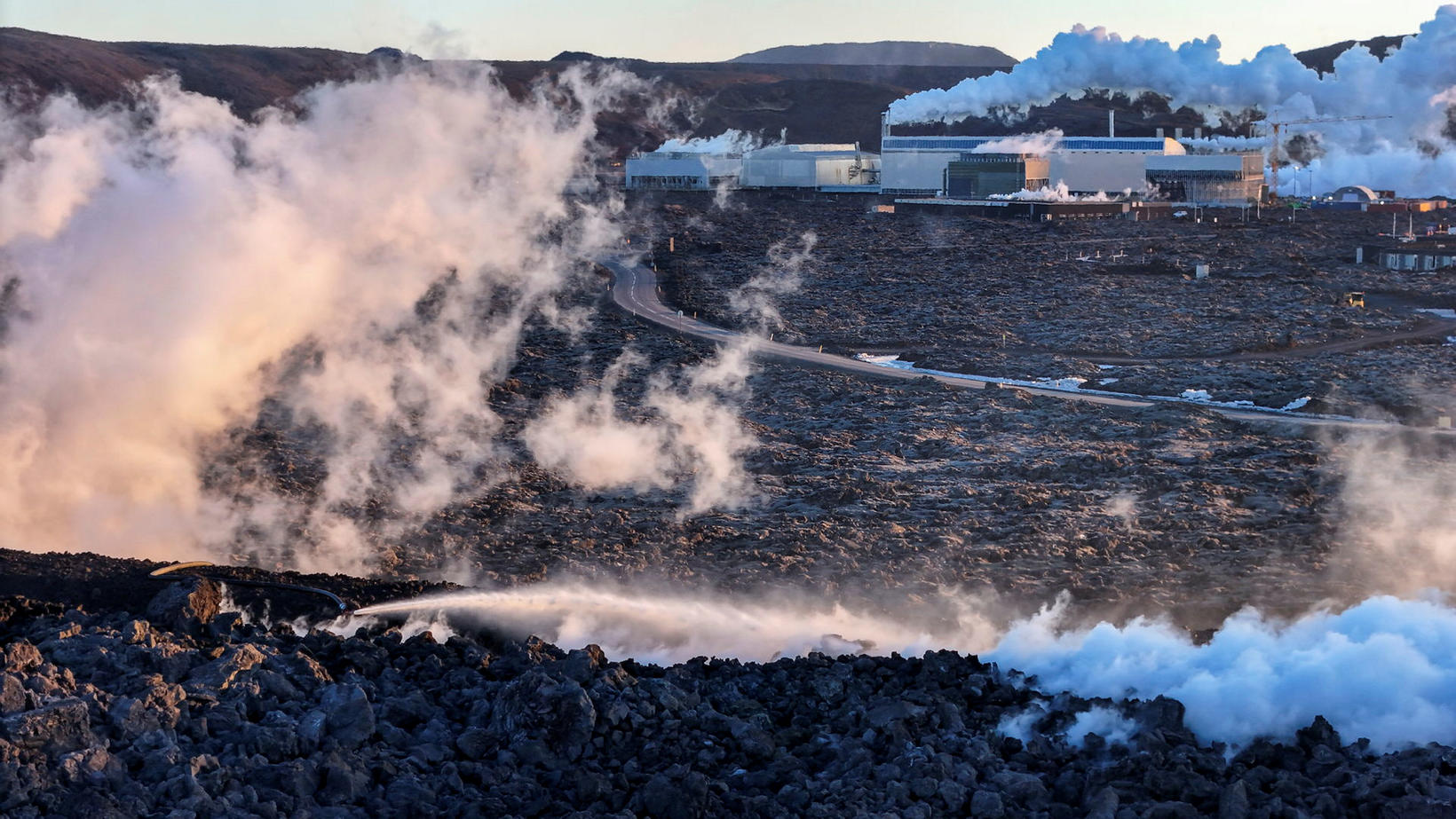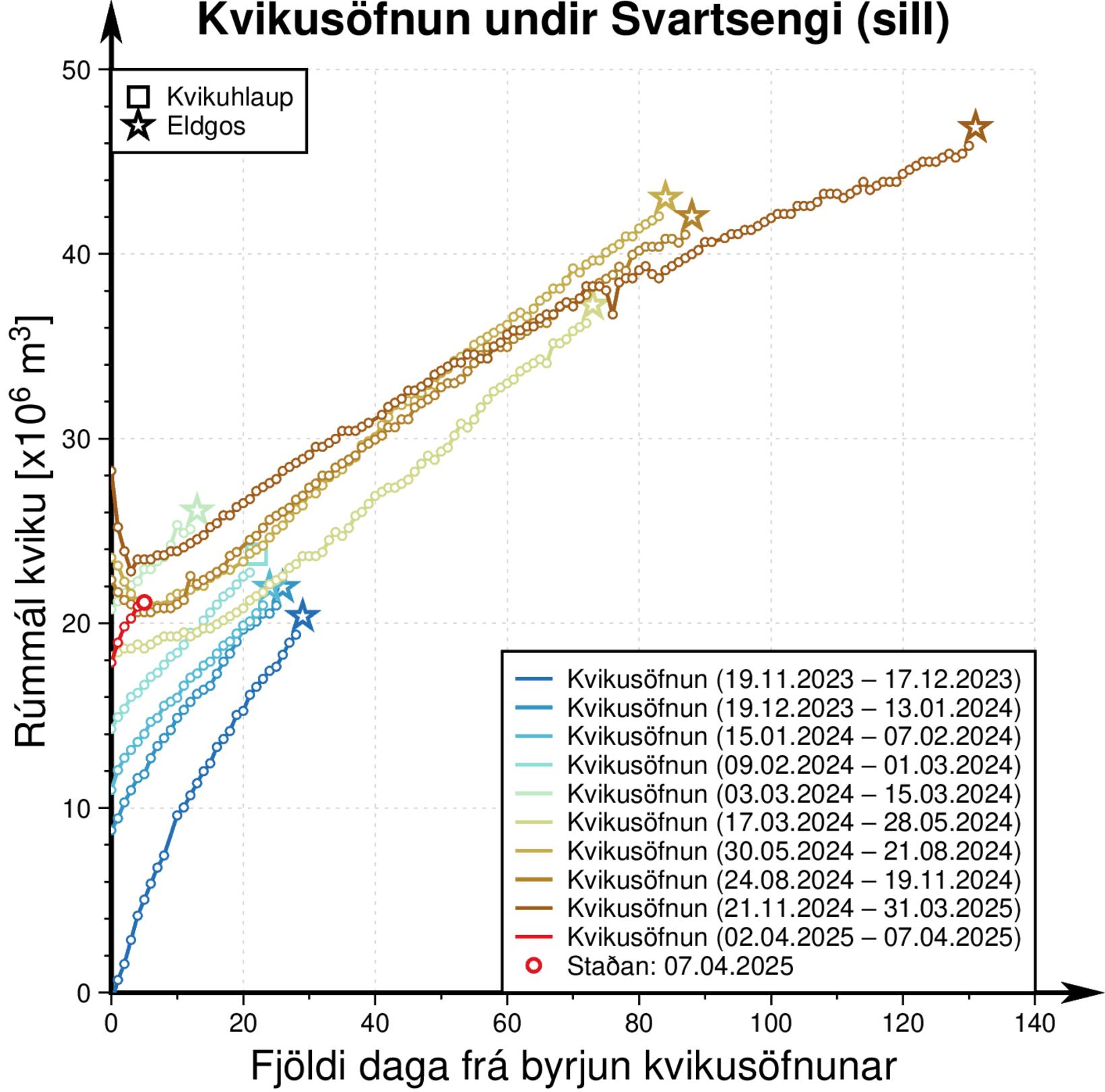Magma flow beneath Svartsengi now faster than after last eruption
“The flow is much faster than after the last eruption and is comparable to what it was at the beginning of 2024,” Ófeigsson says. mbl.is/Hákon Pálsson
The ground beneath Svartsengi is rising rapidly again—and this time, it's happening faster than after the most recent eruption at Sundhnúkagígar.
According to Benedikt Gunnar Ófeigsson, head of deformation measurements at the Icelandic Meteorological Office, the current rate of magma accumulation is comparable to what was seen before the first eruptions in December 2023 and early 2024.
“We’re seeing a very high inflow rate now. Historically, it starts fast and then slows down—so we’ll have to see how this develops,” Ófeigsson said.
A noticeable uptick in magma movement
Compared to the aftermath of the last eruption, the magma is now flowing into the chamber beneath Svartsengi at a significantly higher rate. The previous eruption, while short-lived, was a major geological event. That may explain why the current deformation is so intense.
If this rapid pace continues, the magma chamber could fill again within a short time. However, experts caution against making assumptions too soon.
“The uncertainty is still very high. It’s wise to monitor developments over the coming weeks before drawing any firm conclusions,” Ófeigsson noted.
Magma accumulation in different periods. The red line is from yesterday. Chart/The Icelandic Met Office
Why magma flow starts fast—and then slows
Historically, magma flow beneath Svartsengi begins quickly after an eruption, only to decelerate over time. This is believed to be caused by decreased pressure in the crust, which temporarily reduces resistance to magma inflow. As the magma chamber refills, pressure builds again, making it more difficult for magma to enter and causing the flow to slow.
“It’s extremely unlikely that the current pace will continue,” Ófeigsson said. “That’s not how this system has behaved in the past.”
What comes next?
If the magma keeps flowing at this rate, it could suggest another eruption may not be far off—but again, that’s far from certain.
Scientists are closely watching for signs of change. Any significant shifts in ground deformation, seismic activity, or gas emissions could help forecast what’s to come.
For now, residents and authorities are advised to stay informed, but not alarmed. The Icelandic Meteorological Office continues to monitor the situation closely and will provide updates as new data becomes available.











